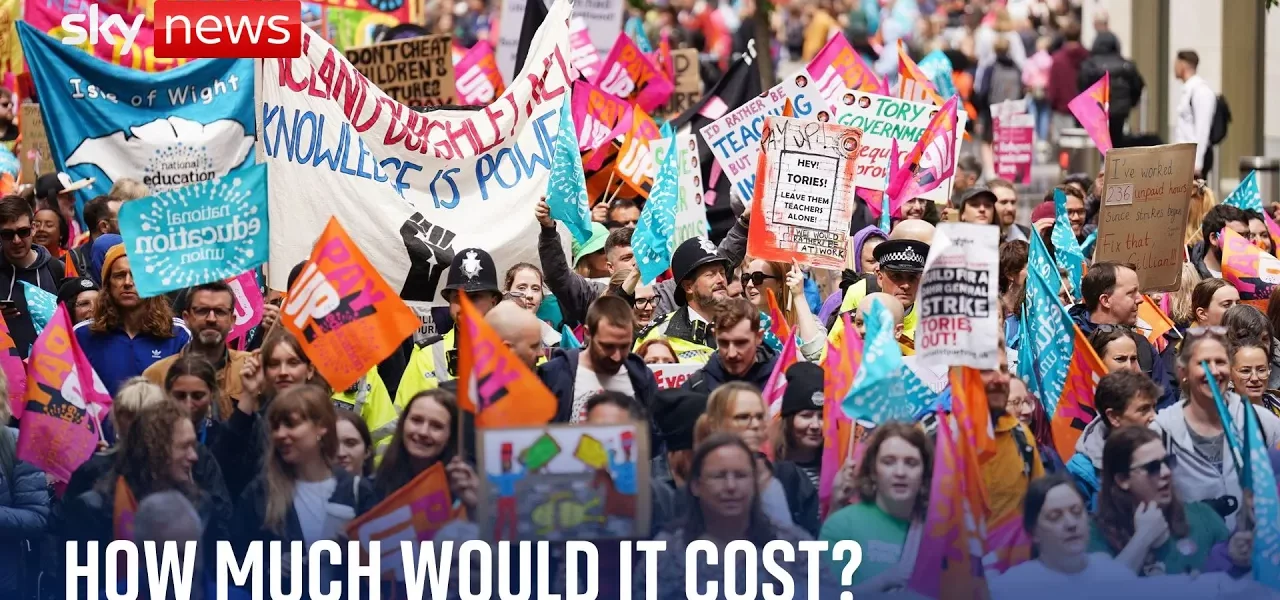Bang the Drum: Celebrating 190 Years of British Trade Unionism

This weekend, the normally peaceful Dorsed countryside transformed into a vibrant hub of music and activism as thousands gathered to celebrate the foundation of modern-day British trade unionism. In light of the ongoing discussions on public sector pay, this article delves into the historical significance of the event and its implications for today’s labor landscape.
Introduction
The weekend celebration in the Dorsed countryside was not just a festive occasion; it was a powerful reminder of the struggles and triumphs that have shaped British trade unionism over the past 190 years. The event marked the deportation of the Tolpuddle Martyrs, a group of early labor activists who fought for fair wages and workers’ rights. Today, their legacy continues to inspire current trade union leaders as they prepare for new battles, especially in the realm of public sector pay negotiations with the new labor government.
The Historical Context of Trade Unionism
Understanding the significance of the Tolpuddle Martyrs requires a look into the history of trade unionism in Britain. The Martyrs were arrested in 1834 for forming a trade union to resist wage reductions. Their struggle epitomizes the fight for workers’ rights and has laid the groundwork for the labor movements that followed. Here are some key points about their impact:
- Early Struggles: The arrest of the Tolpuddle Martyrs highlighted the harsh realities faced by workers in the 19th century.
- Legal Changes: Their case garnered national attention and led to significant legal reforms in labor rights.
- Inspiration for Future Generations: The Martyrs became symbols of resistance and solidarity among workers.
Current Climate of Public Sector Pay
Fast forward to today, trade union leaders are once again rallying for fair pay, particularly in the public sector. The backdrop of the recent celebrations is the pressing issue of public sector pay, with leaders advocating for substantial increases to meet the rising cost of living. The following points summarize the current situation:
Recommendations by Independent Review Bodies
Independent review bodies have recommended a 5.5% pay increase for nearly 2 million teachers and NHS workers. This recommendation significantly exceeds the current inflation rate of 2% and the budgeted increase of 1-3% by the labor government. Here are some important aspects to consider:
- Inflation Impact: The current inflation rate poses a challenge for workers, making the recommended pay rise crucial.
- Government Response: The new labor government must weigh the costs of implementing these recommendations against potential unrest.
- Long-Term Implications: Failure to address these pay concerns may lead to difficulties in recruiting and retaining essential workers.
Economic Considerations
Economists warn that replicating the proposed pay increases across all public sector workers could lead to a financial burden of up to £10 billion. This has sparked a debate on the sustainability of such rises amid existing economic challenges. Key considerations include:
- Budgetary Constraints: The government must navigate tight budgets while addressing worker demands.
- Long-Term Economic Health: Striking a balance between fair compensation and economic sustainability is vital.
- Political Will: The government’s willingness to prioritize public sector pay reflects its commitment to labor rights.
Government’s Stance and Future Outlook
Chancellor Jeremy Hunt’s recent statements suggest a cautious approach towards public sector pay settlements. While he acknowledges the importance of addressing pay demands, he advocates for fiscal restraint. Here are his key points:
Chancellor’s Perspective
Hunt emphasizes the need for balance in addressing public sector pay without compromising fiscal responsibility. His approach includes:
- Productivity Improvements: Focusing on enhancing public sector productivity as a means to justify pay increases.
- Welfare Reforms: Advocating for reforms to ensure long-term economic stability.
- Cost of Inaction: Acknowledging that neglecting pay issues could lead to industrial action and further complications.
Impending Decisions
With MPs returning to Westminster, the discussions surrounding public sector pay are set to intensify. The government faces a critical decision-making period where they must balance financial realities with the needs of public sector workers. The following points summarize the anticipated challenges:
- Timing: Decisions are expected to be made by the middle of next week, creating urgency for all parties involved.
- Public Reaction: The response from unions and public sector employees could shape the political landscape moving forward.
- Negotiation Strategies: The government will need to devise effective strategies to handle potential unrest.
Conclusion
The celebration of the Tolpuddle Martyrs serves as a poignant reminder of the ongoing fight for workers’ rights in Britain. As trade union leaders prepare for negotiations over public sector pay, the lessons of history loom large. It is imperative for the new labor government to heed the recommendations from independent review bodies and address the pressing needs of teachers and NHS workers. Will they rise to the challenge, or will the echoes of past struggles continue to resonate in future protests? As the situation unfolds, citizens are encouraged to stay informed and voice their support for fair labor practices.
For more insights on labor rights and public sector issues, check out our related articles on Public Sector Pay and The History of Trade Unions in Britain.
“`




